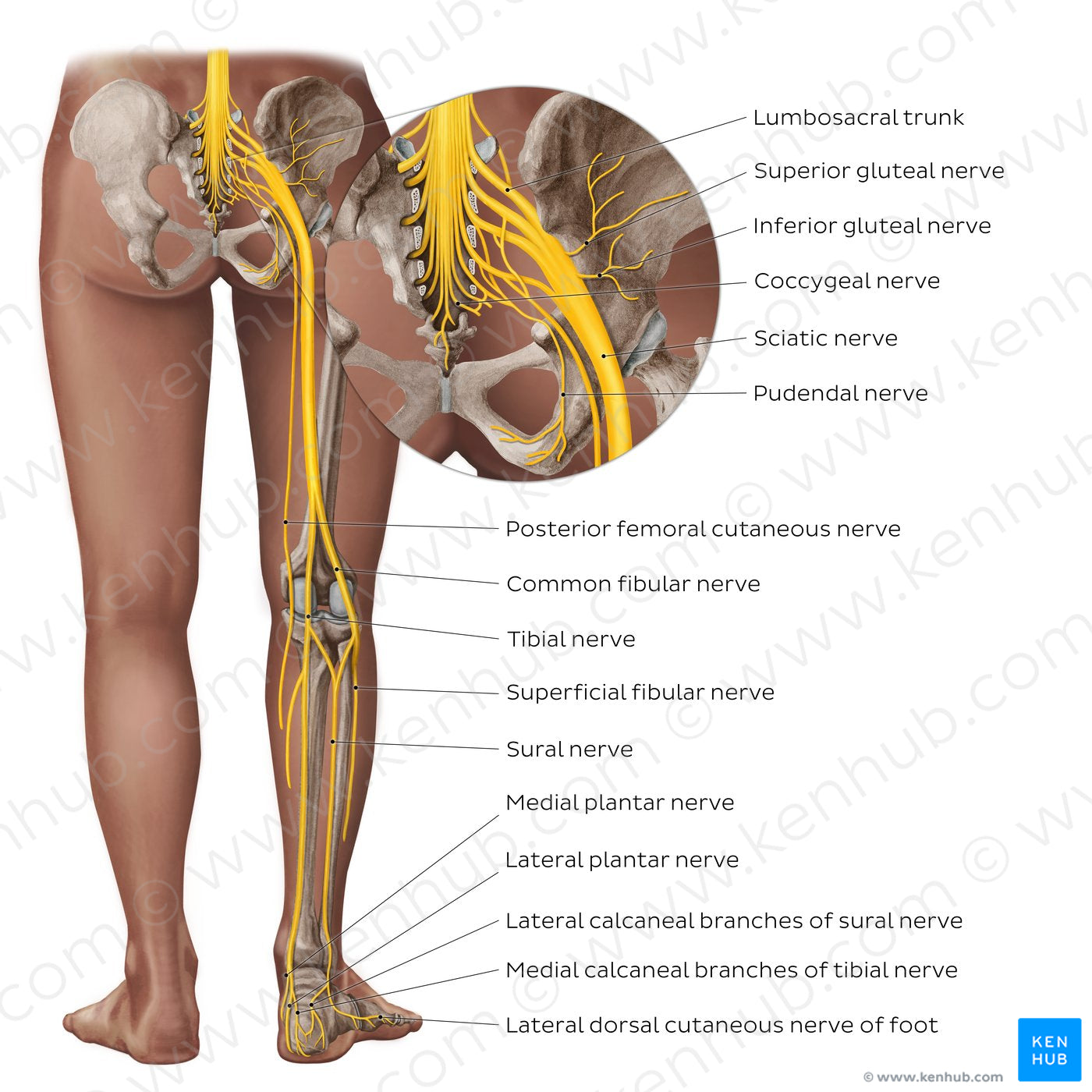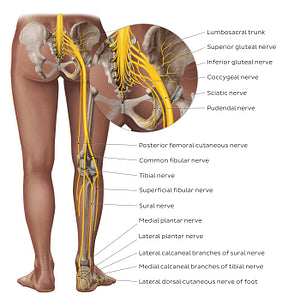Irina Münstermann
Sciatic nerve and its branches (English)
Sciatic nerve and its branches (English)
The sciatic nerve is formed within the pelvis from the anterior rami of spinal nerves L4-S3 . It enters the lower limb by traveling through the greater sciatic foramen of the posterior pelvis and inferior to, or occasionally through, the piriformis muscle. After passing into the free lower limb, the sciatic nerve passes down the posterior thigh supplying innervation to the hip joint, hamstring muscles and ischiocondylar part of the adductor magnus muscle. Just above the level of the knee, the sciatic nerve divides into its two terminal branches; the tibial nerve and the common fibular/peroneal nerve. The tibial nerve supplies motor and sensory innervation to the posterior leg and foot. The major branches of the tibial nerve are the sural nerve and the medial and lateral plantar nerves. The common fibular nerve quickly divides into the deep fibular nerve and the superficial fibular nerve; these nerves provide motor and sensory supply to the anterolateral aspects of the leg and the dorsum of the foot.
Regular price
$7.56 USD
Regular price
Sale price
$7.56 USD
Unit price
per
Couldn't load pickup availability


#FDCB18
#A77459
#74561D
#55352C
#FADD50
#C8B7AC

